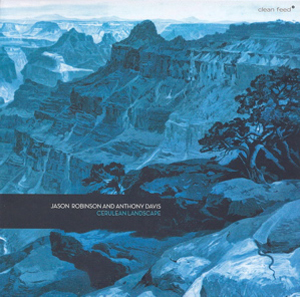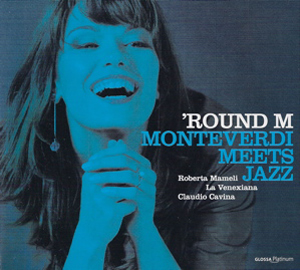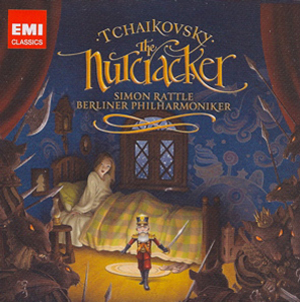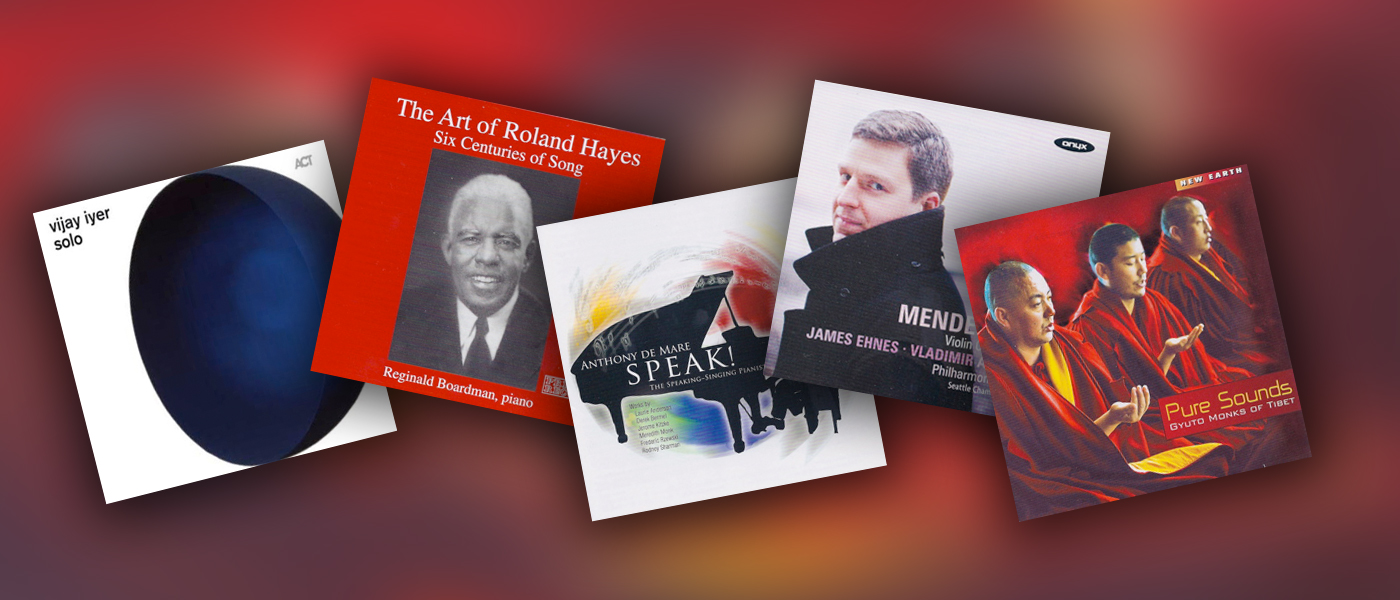
Jason Robinson and Anthony Davis Cerulean Landscape Clean Feed CF198CD
- Performance:

- Sonics:

Bi-coastal jazz saxophonist Jason Robinson, 35, an Assistant Professor of Music at Amherst College and former musician with the San Francisco Mime Troupe, seems to be blowing non-stop these days. No less that three albums that showcase the seemingly limitless range of his versatile musicianship hit the literal and virtual shelves in the fall of 2010. Each album shows Robinson on the cusp between tradition and experimentalism, with a strong emphasis on the latter. For listeners who can fling caution to the winds without need of a safety net, Robinson’s music will prove especially juicy.
The first of Robinson’s new albums is Cerulean Landscape. Recorded in Amherst, mixed in southern California, and sporting liner notes written in San Francisco, it features the fruits of Robinson’s 12-year partnership with pianist, composer, and UC San Diego professor Anthony Davis, 59. Given that Davis’ oeuvre includes the opera X, The Life and Times of Malcolm X, which caused quite a stir at its 1986 premiere at New York City Opera, and the incidental music for the Broadway version of Tony Kushner’s Angels in America, expectations are for anything but middle-of-the-road mush.
The second recording, The Two Faces of Janus (Cuneiform), features Robinson (tenor and soprano saxes, alto flute), Liberty Ellman (guitar), Drew Gress (bass), Greorge Schuller (drums), with Marty Ehrlich (alto sax, bass clarinet), Rudresh Mahanthappa (alto sax). The music is angular, gritty, and undoubtedly challenging for some.
Also challenging, and equally exciting for those with a taste for adventure, is Cerberus Reigning (Accretions). The second in a trilogy of Robinson’s conceptual solo saxophone releases, this is a realtime electroacoustic excursion featuring the artist on tenor and soprano saxes, alto flute, computer. Robinson describes it as “a richly evocative collection of pieces that tell a story about an other-worldly three-belled saxophone of sorts.â€
Having auditioned all these albums, my favorite hands down is Cerulean Landscape. It is certainly the best recorded of the three. (The sonics on The Two Faces of Janus call for an about face).
Surprise is the order of the on Cerulean Landscape. The CD launches in an extremely relaxed, lyrical mood, only to catch you off guard with its frequent and unheralded shifts into high gear. On “Andrew,†the music is initially discordant, and then begins to bop along as it goes through a string of unexpected gear shifts. “Cerulean Seas and Veridian Skiesâ€, the last of the album’s seven tracks, is equally unpredictable. Now in brighter mode – Robinson switches between soprano, alto, and tenor sax to achieve the coloring he seeks, and also throws in alto flute – the music opens itself wide to the blue beauty of nature’s realm. Together, these gifted artists create a multi-hued, high-flying lyricism for the 21st century.

Roberta Mameli, La Venexiana, Claudio Cavina ‘Round M: Monteverdi Meets Jazz Glossa GCD P30917
- Performance:

- Sonics:

Meetings between classical and jazz ensembles are a chancy proposition. Too often the results are either uncomfortably pretentious, self-conscious to a fault, or downright insipid. But when the music is by Claudio Monteverdi (1567 – 1643), a composer whose emotionally intense operas and madrigals frequently broke new ground, the coast is clear for improvisation. After all, it was Moneverdi who encouraged liberties by writing, at the start of his great Lamento dell ninfa (1638), “…the lament has to be sung according to the sentiments of the spirit, and not of the beating of the hand.â€
This successful effort in combining the two idioms thrives in part thanks to the gifts of soprano Roberta Mameli. An operatic soprano with a most fetching voice and natural feel for jazz, Mameli was born in Rome. Her debut came at a young age, singing Mercury in Purcell’s Dido and Aeneas.
Mameli’s concert repertoire is vast, ranging from baroque to the present day, and includes usual suspects by Vivaldi, Fauré, Mozart, Handel, Bernstein, Orff, and others. A regular in Vienna, the Concertgebouw, Paris, Regenberg, and a host of Italian cities, she has worked with a host of European baroque ensembles.
Equally vital is baroque ensemble La Venexiana, which has made a specialty of the madrigals of Monteverdi. Founded by Claudio Davina, the ensemble takes its name from an anonymous renaissance comedy, and thrives on theatricality and the contrast between the sacred and profane. Among its awards are the Prix Cecilia 1999, Prix Cini 2000, Prix Amadeus 2000, Gramophone Award 2001 and 2008, Cannes Classical Award 2002, Grand Prix Du Disque Academie Charles Cross 2003, Amadeus’ CD Of The Year 2001, Deutschschallplattenkritik 2005 and 2006, and Choc Of Year 2006. Heard on this recording are two violins, viola, cellos, two theorbos, harp, and harpsichord.
A hand-picked jazz ensemble that that plays soprano and tenor saxophones, accordion, double bass, and drums seem of one mind with Monteverdi’s music. Put it all together, and you end up with music as moving as it is fascinating. As the jazz players perform discreetly in the background, Mameli and La Venexiana perform every note that Monteverdi intended for voice and bass, while bending and emoting the line in ways that honor tradition and modernity in the same breath.
In addition to performing four works by Monteverdi, the CD includes jazz renditions of music by three of his contemporaries. There is also a modern take-off on the composition that begins the CD, Lamento dell ninfa. Composed by Antonio Eros Negri and entitled Transfigurazione della ninfa, it brings the CD to a delicious close. Listen as well to the sax wail in the background as Mameli teases and emotes her way through Tarquinio Merula’s Canzonetta spirituale sopra la nanna. Verdict: Delectable.

Versions of the following reviews first appears at sfcv.org, the website of San Francisco Classical Voice.
Eric Whitacre Light and; Gold Whitacre Conducts Whitacre – Decca 895137
- Performance:

- Sonics:

This disc is a revelation. A revelation as much to initiates who think they know the beautiful, oft-ethereal choral music of Eric Whitacre, as to the millions who know him only from the YouTube Virtual Choir video of “Lux Aurumque†and those who have yet to make his acquaintance. There may be 67 CDs currently available in the U.S. that contain Whitacre’s music, including five devoted solely to his oeuvre, but Decca’s new Eric Whitacre: Light and; Gold is the only one on which he conducts his own music and singers. And therein lies the difference.
Take, for example, the title track, “Lux Aurumque†(Light and; Gold), and the last one, “Sleep.†Both appear on two other well-known all-Whitacre recordings, Polyphony’s 2006 release, Cloudburst (Hyperion), and the Elora Festival Singer’s 2010 release, Whitacre: Choral Music (Naxos). On neither will you hear the host of accents, volume gradations, and shadings that Whitacre and his singers lavish on the works. “Sleep†in particular sounds so prosaic and strophic-bound on the Elora disc that you may be tempted to either take the title as a command or skip to the next track. As for the ubiquitous “Lux Aurumqueâ€, it here sounds almost as if it has been lavished with a new arrangement. In Whitacre’s hands, both works are mesmerizing.
And so it is with every track on Whitacre’s recording. Throughout the recital’s generous 73-minutes, performances are distinguished by the naïve, little girl sound of Whitacre’s chosen sopranos, the clarity of the diction, and the very personal touch of the composer. The texture is so personal, the quiet passages so intimate, and the silence so profound, it’s as if we have been invited into Whitacre’s inner sanctum. The Five Hebrew Love Songs (1996), for example, settings of poems by the extremely gifted high-flying soprano Hila Plitmann, who was then Whitacre’s girlfriend and is now his wife, come across as the true love offerings they are. And when a work written for The King’s Singers is performed by The King’s Singers, as it is on this disc, the word “definitive†has meaning.
The impact of Whitacre’s liner notes, which detail the genesis of each composition, cannot be denied. If you think his choral writing is sincere, wait until you read what he has to say about it. When Whitacre writes that a performance or experience moved him to tears, and then conducts the music he is talking about, it’s hard not to feel as though you’ve made the acquaintance of one of the more Honest people on the planet.
As the election results come in, and lives, dreams, and the ecology of the planet hang in precarious balance, Whitacre’s gorgeous music seems like holy balm. I, for one, am grateful for the experience. Only someone of the magnitude and gravitas of Dr. Martin Luther King, Jr. could possibly take us to the realm of truth that Whitacre opens to us.

Passing By Songs of Jake Heggie Avie AV2198
- Performance:

- Sonics:

Not too long ago, some were ready to dismiss Jake Heggie as a second rate composer with a penchant for Broadway frivolity. He was light, he was charming, he was oh so gay, but he wasn’t much else. As for his heart-wrenchingly profound opera, Dead Man Walking, it was a one-off anomaly amidst mounds of music that concerned themselves not with what lies beneath the surface.
Then came the critical swell of approval for another profound Heggie co-creation, the opera Moby Dick. Now, shortly after those who were so quick to dismiss Heggie’s oeuvre found themselves caught with their pants down, the San Francisco composer has ripped them off with the release of his latest CD, Passing By [bold intended by the composer]. A collection of beautifully shaped art songs, some dating from as early as 1980, when Heggie was a 19-year-old living in Paris, the works address love and loss with such beauty and care that those who revere Schubert, Schumann and their peers will likely find themselves playing them over and over.
As evidence of the personal esteem that his colleagues hold him in, Heggie has assembled one of the finest collections of American singers ever to grace a contemporary song collection: soprano Isabel Bayrakdarian; mezzos Susan Graham, Zheng Cao, Frederica von Stade, and Joyce DiDonato; tenor Paul Groves; and baritone Keith Phares. The sterling accompanists – violinist Dawn Harms, violist CarlaMaria Rodrigues, cellist Emil Miland, and Heggie himself on piano – may have a more local pedigree, but their playing is as distinguished as the singing.
Passing By establishes its predominant tone in the first track. Performing “A Lucky Child†from At the Statue of Venus (2005), to text by Terrence McNally, Graham sounds so natural and relaxed, her singing so deeply felt, that the beauty of this simple reflection on love experienced by a child goes straight to the heart. Given that At The Statue of Venus, an extended musical scene for soprano and piano originally intended for Renée Fleming but debuted by Kristin Clayton, is mostly a scream, it’s easy to overlook this introspective gem amidst the humor. It takes an artist of Graham’s magnitude to bring it home.
Some Times of Day (2004), a set of three short songs based on poetry by the late Raymond Carver, was written for Cao and a trio that included Harms and Miland. Everyone performs at their virtuosic best. Note Harms’ teasing display in the first song, and the wonderful melody that surfaces in the final piece.
I could go on for days about the wonders created when, in the four duets of Facing Forward/Looking Back (2007), first von Stade and Graham, then von Stade and DiDonato meld perfectly in duet. The setting of Armistead Maupin’s “Mother in the Mirror†is as hilarious as Heggie’s setting of his own poem, “Facing Forwardâ€, is beautiful. You can’t help but love this song, especially when sung by two great mezzos.
Phares could sing the phonebook and still sound as handsome as can be. But his Here and Gone (2005) duets with Groves are far deeper than that. Settings of poems by A.E. Housman and Vachel Lindsay that together describe the attempted reconnection of two old friends, once split apart by fear of homosexual love, the cycle addresses a subject that few composers are willing to touch.
To the four Songs and Sonnets of Ophelia (1999), Bayrakdarian brings the touch of youth. In “Springâ€, she manages one of the softest pianissimos I have ever heard on disc. The subject, in Heggie’s words “an extraordinary young woman – pushed, pulled and used in a world dominated by men – seeking connection and agonizing over love,†further evidences the composer’s belief that love, in whatever forms it may manifest, is what matters most.
To DiDonato is entrusted Final Monologue (2007), a setting of the conclusion of Terrence McNally’s award-winning play about Maria Callas, Master Class. DiDonato transcends the temptation to wallow in maudlin self-pity, bringing far more beauty to the scene than I expect Callas would have done in real life.
“The only thanks I ask is that you sing properly and honestly,†sings Callas. Heggie and friends do just that, and more. This is a very special recording.

Tchaikovsky The Nutcracker Berlin Philharmonic, Sir Simon Rattle EMI 421222B
- Performance:

- Sonics:

Fresh! As apt as the description may be for Sir Simon Rattle’s Berlin Philharmonic recording of the complete score of Tchaikovsky’s The Nutcracker (EMI), it’s not the spirit with which many approach America’s perennial balletic holiday ritual. In addition to oft-worn sets and a cast of characters that even Mark Morris in drag cannot totally restore to youth, orchestras often grind out the music with the same lack of excitement usually reserved for that annual obligatory visit to dreadful Aunt Tillie.
Not so with Sir Simon. From the first sharp accents of the Miniature Overture, he and the Berliners signal an open-eyed alertness to new possibilities. Although tempi are almost universally slower than in Antal Dorati’s classic recording with the London Symphony Orchestra, virtually every phrase seems to burst with energy. Rattle may say, in a recent interview in The Wall Street Journal, that he and the Berliners decided to do The Nutcracker “as a symphonic piece… rather than imagining what the ballet dancers would have to do, because that’s another art,” but his recording dances out of a good sound system with all the colors and visuals of a great balletic performance.
The recording perspective is distant, with lots of bass warmth and resonant glow from the Philharmonie, Berlin replacing up front and close glisten. Instruments are a bit muted until spotlighted by multi-miking. Yet the music seems everywhere to sparkle with energy.
The reason for the performance’s success soon becomes clear. As one irresistible melody after another leads us into a fantasy universe, you know that the musicians are already there. They have fallen in love with this music. Through their love, we sense how miraculous it was that Tchaikovsky, just a year before his death, managed to write an uplifting ballet whose emotional outlook was the mirror opposite of his own.
I’m not going to tell you when the noisemakers start, but the effect is hilarious. So is the gunshot. The beginning of the Scene in the Pine Forest is filled with grace, and its climax substantial. The arrival in the Kingdom of Sweets is absolutely magical, the strings in the Arabian Dance (Coffee) diaphanous and seductive.
The beginning of the Waltz of the Flowers may want for a bit more spark, but when it begins to swirl, we swirl with it. The sense of air around the spotlighted harp in the Pas de Deux is extremely beautiful. The percussion may not be as deep and profound as on recordings from Telarc and other audiophile labels, but the Dance of the Sugar Plum Fairy is such a wave of the fairy wand that it matters little.
The Final Waltz and Apotheosis are like proverbial icing on the cake. It would have been nice to have liner notes that include a summary of the action – perhaps they’re available in EMI’s deluxe edition – but this is one recording where the music tells its own story.
Hesitate not. This Nutcracker could well be subtitled, Rattle in Wonderland. Everyone save Scrooge will eat it up.


